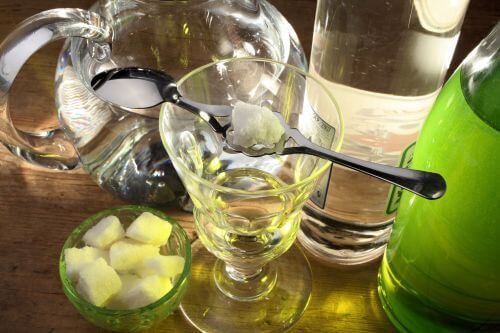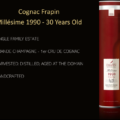Originally produced as a medicine in the latter half of the 18th century, it became a popular aperitif and eventually an icon of France’s Belle Epoque. Unfortunately bad press and the rise of temperance early in the 20th century led to its almost universal banning across the world. The bans have now been overturned and the spirit is legally available again – the resurgence of absinthe in the UK and further afield is gaining pace.
How absinthe is made
Absinthe is a distilled spirit flavoured with bitter wormwood and a variety of other botanicals, including sweet anis and fennel, as well as many others.
The two main types of absinthe are verte and blanche, green and clear. Immediately after distillation the spirit is clear and can be bottled as a blance; vertes are traditionally coloured green by infusing the spirit with more botanicals before bottling.
While there are many traditionally produced absinthes available, there are also a number of ‘compounded’ spirits on the market. These use artificial colour and flavourings to produce their spirits, and generally do not have the same depth of flavour.
Does absinthe make you hallucinate?
In theory, it could do, but in reality it is highly unlikely. The chemical in absinthe that can cause hallucinations is called thujone, a component in wormwood. However, the levels of thujone in absinthe are so low that it would take a huge quantity of absinthe to have any effect.
How to drink absinthe
Absinthe should not be drunk neat, and should always be diluted with chilled water – a ratio of one part absinthe to between three and five parts water is usual. Many traditions have arisen around the serving of absinthe, including the slow dripping of water on to a sugar cube sat on an absinthe spoon, which all add to the mystique of the spirit.


Absinthe Spoons
One of the most elegant artefacts in the drinks world, absinthe spoons are both beautiful to look at and serve a useful purpose. Having been placed over a glass of absinthe, the spoon is so designed to rest a sugar cube on its surface, which gradually dissolves and drips through the perforations once iced water has been carefully dripped over the top of it. The appearance of absinthe spoons can vary – some, for example, are shaped to resemble a wormwood leaf, while others bear beautifully intricate art-deco designs. The rarest are incredibly valuable, too, selling for hundreds, even thousands of pounds










